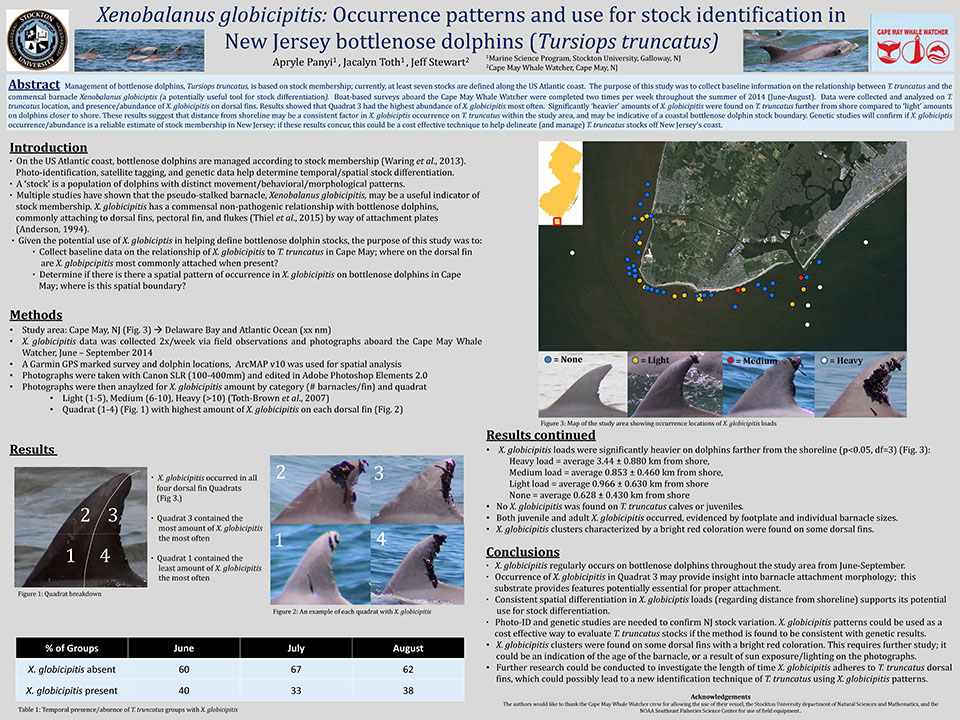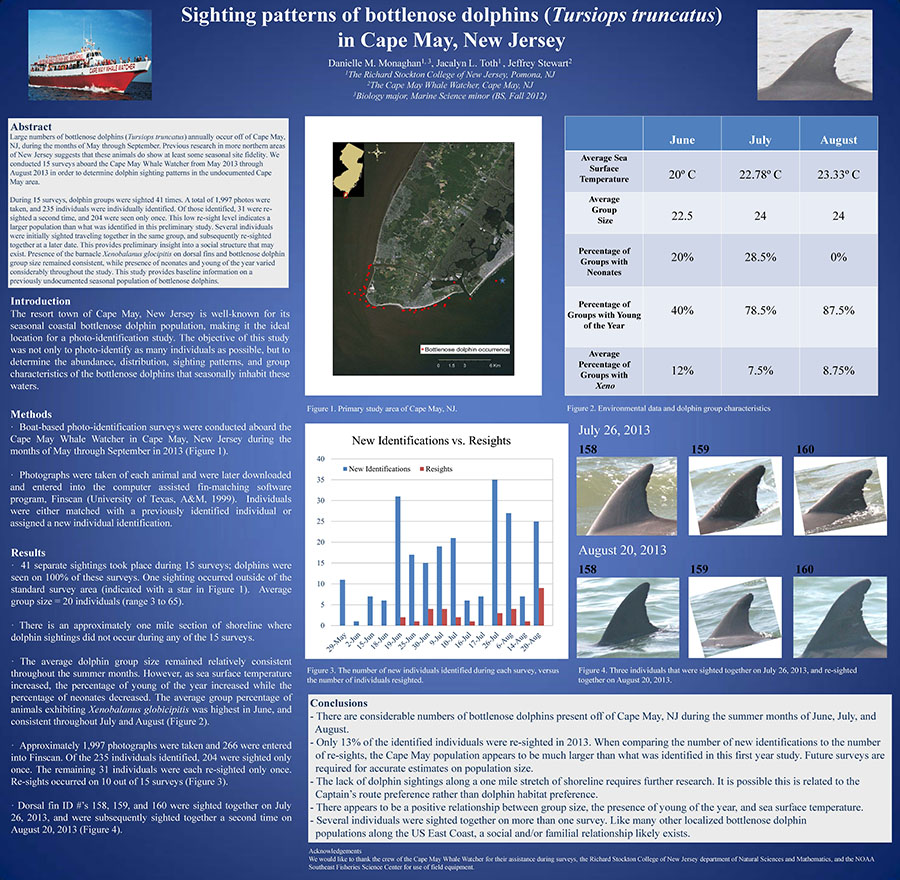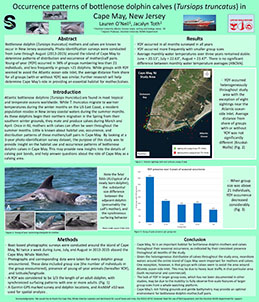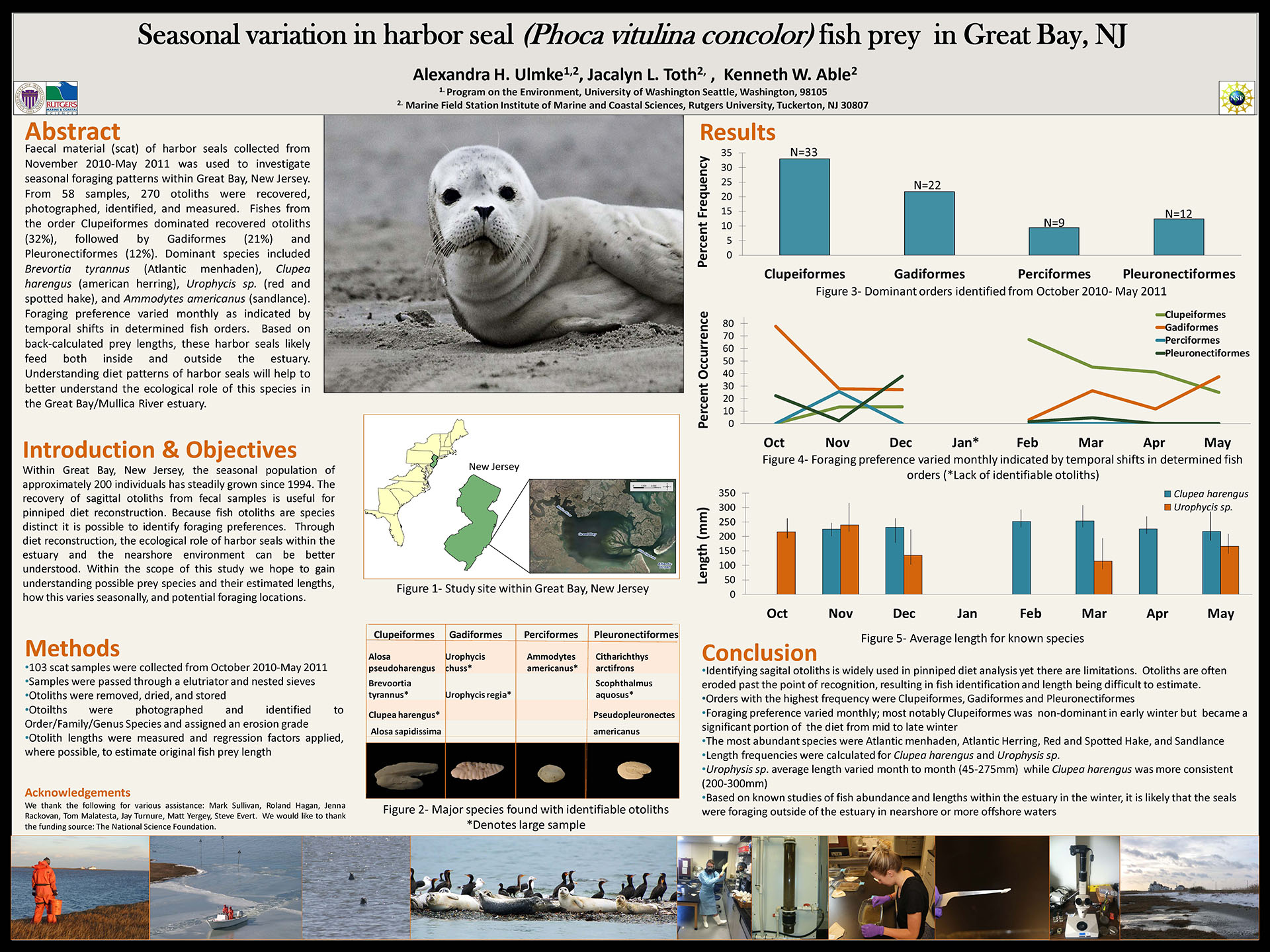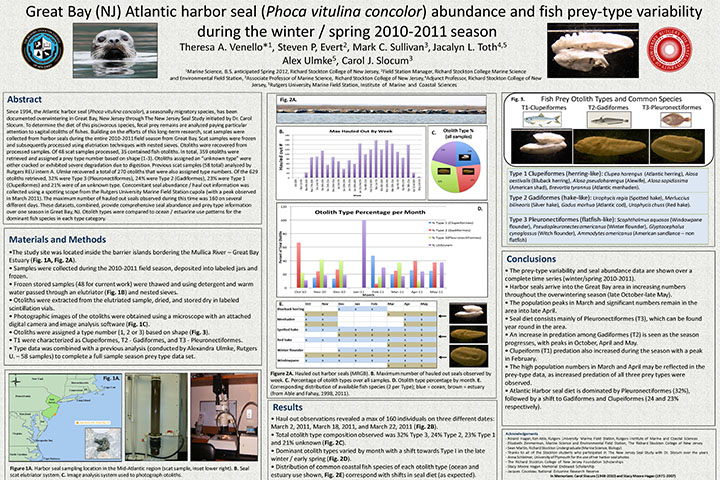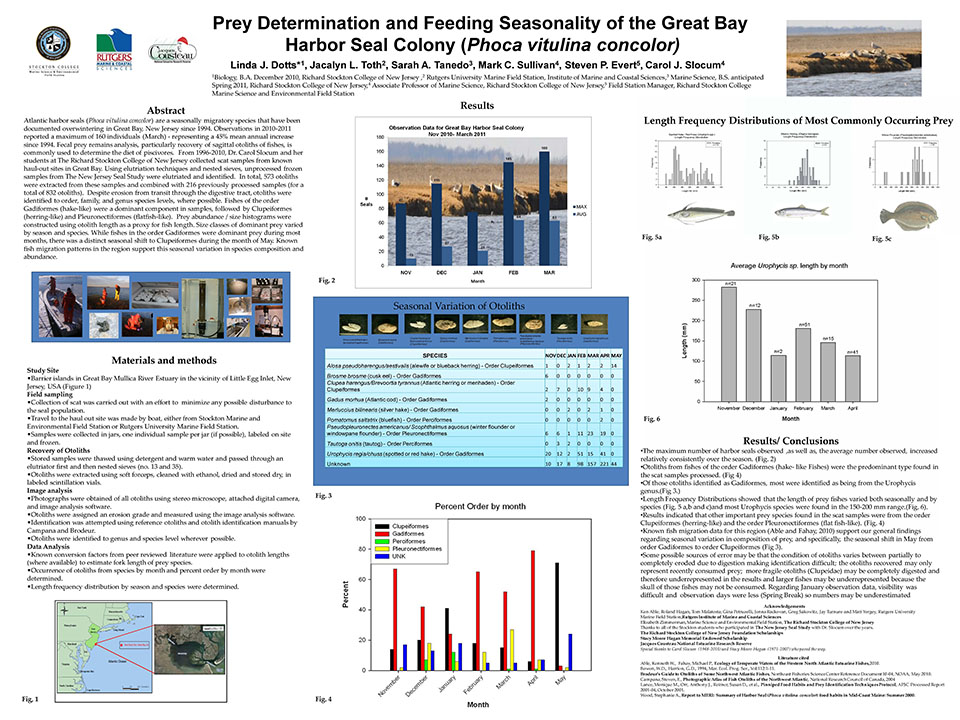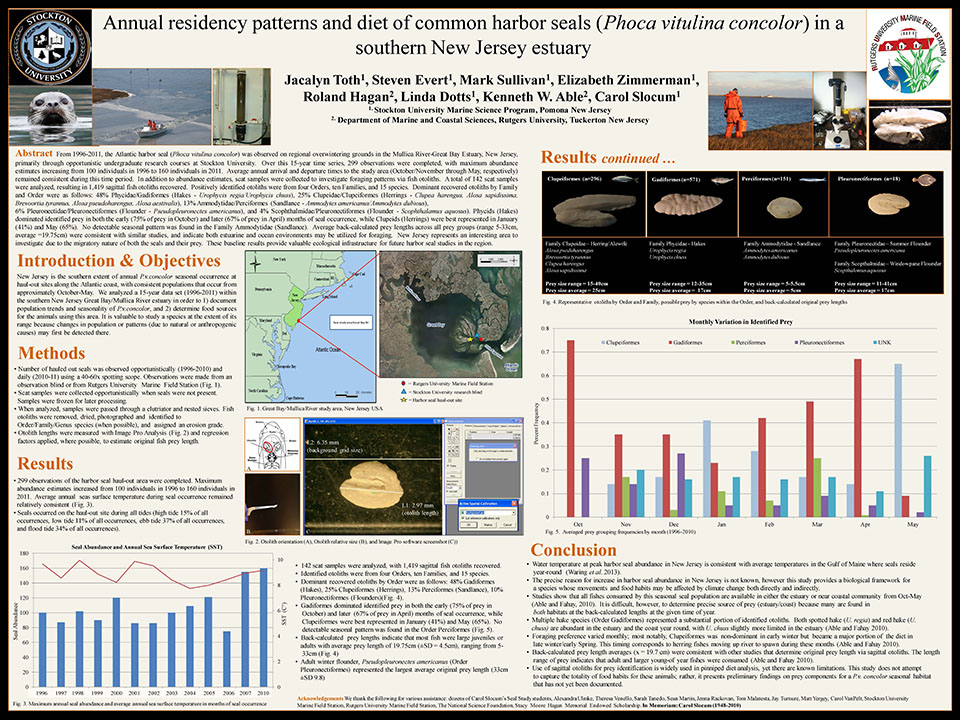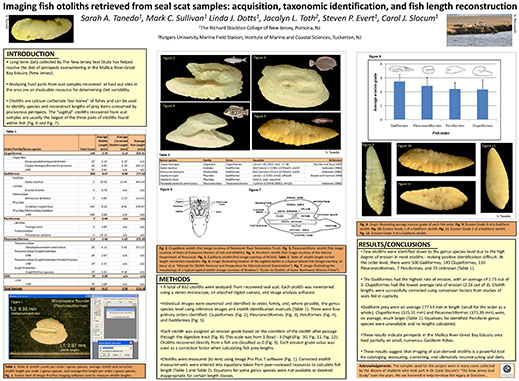Marine Mammals
Marine mammal research programs at Stockton focus on life history, ecology, and population dynamics of New Jersey’s seasonal population of common Harbor seals and bottlenose dolphins.
To better understand population structure and trends of these important apex species in New Jersey, studies focus on patterns of distribution and movement, abundance, and food habits.
For more information on marine mammal research at Stockton, please contact Jacalyn.Toth@stockton.edu.






Bottlenose dolphins (Tursiops truncatus)
New Jersey is at the northern extent of annual Bottlenose dolphin occurrence along the Atlantic coast, with a consistent population occurring from approximately April – November annually. To better understand population structure, dynamics, and habitat use of these seasonal animals, studies focus on population shifts, movement patterns, and behavioral trends of bottlenose dolphins in southern New Jersey nearshore waters. These studies assist in the ongoing efforts to better understand complex stock structure of transient bottlenose dolphins along the east coast of the US.
Harbor seals (Phoca vitulina)
As apex predators, harbor seals are an excellent indicator species for ecosystem shifts. New Jersey is at the southern extent of annual Harbor seal seasonal occurrence along the Atlantic coast, with a consistent population occurring from approximately October-May. This population overwinters, in part, within the southern New Jersey Great Bay/Mullica River estuary. The New Jersey Seal Study 1) documents population trends and seasonality of harbor seals that annually haul-out with Great Bay, NJ and 2) determines food habits of the animals using this area (prey hard parts/eDNA). The goals of the study include determination of temporal patterns of harbor seal habitat use in southern New Jersey, population size, diet, and shifts therein over time due to natural and/or anthropogenic changes.
